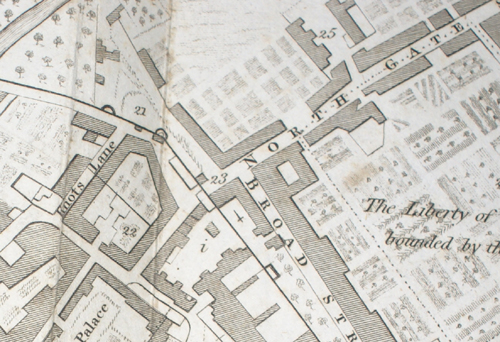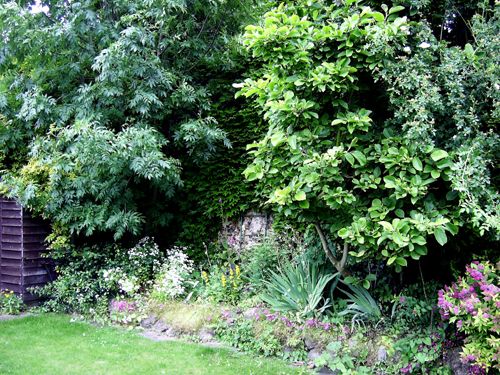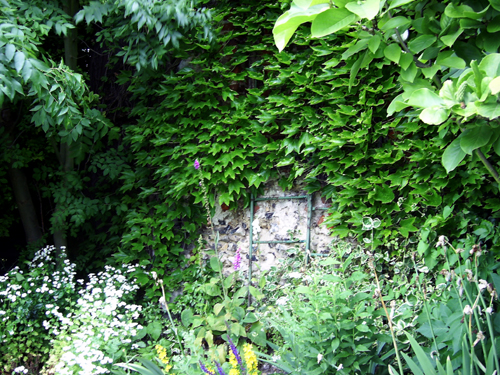
![]()
~ ST. RADIGUND'S BATH ~
ST. RADEGUND'S BATH
WITHOUT NORTHGATE, CANTERBURY
Possibly Roman, and supplied by a natural spring

St. Radigund's Bath No. 21 on the map detail from Hasted's in my collection
"...and without the North gate is a fine spring of water, where a bath, called St. Rhadigund's bath, has been constructed, with the requisite accommodation." A Topographical dictionary of England 1848
In consequence of the rapid melting of the snow, which commenced on Monday evening, a great number of houses in Canterbury were overflowed, and the furniture in many materially damaged. The thaw continuing all Tuesday, and the greatest part of Wednesday, occasioned the river Stour to spread its waters to a greater depth and extent than at any time since the year 1776, over all the adjoining low lands from Ashford to Sandwich haven. At noon on Wednesday, the flood increased so rapidly, that many houses in Stour Street, Beer cart lane, Lamb lane, Bests Lane, St. Radegund's bath, Pound Lane, part of St. Peter's, Cocklane, St. Dunstan's, and North Lane, had their ground floors laid under water, those nearest the river several feet deep. The inhabitants were obliged to betake themselves to their chambers for safety, and some families to leave their habitations. In the afternoon it again began to freeze, which probably in some measure checked the supplies of the torrent, and lessened its rapidity; and between ten and eleven at night the waters were perceived to subside, and in the morning marked their progress, by leaving the streets covered with broad and broken sheets of ice. TSMFeb1795

The photo shows a remaining fragment of the wall from the St. Radigund's Baths. They are incorporated into the wall of a workshop at 16 St. Radigund's Street, and may be seen from the garden of the Dolphin pub next door. Thanks kindly to Len Parrick for the above.
We now have nothing to attract our notice till we come to Northgate, except that we cross a street parallel to the city wall, which on the right hand, is continued almost to the bak of hte river, and, on the left quite as far as the castle and St. Mildred's postern. That part on the right hand is called Duck lane, and leads to St. Radegund's bath, a fine spring, built over, and fitted for cold bathing; the basin or bath itself being twenty feet long, eleven feet wide, and from three to four feet deep.* A dwelling house adjoins to it of modern structure, but in altering a very ancient one, near the bath, some hollows or pipes were discovered, carried along in the thickness of an old stone wall, which seemed a contrivance for heating the room in former times, and making a sudatory or sweating room of it.

The photo shows a remaining fragment of the wall from the St. Radigund's Baths. They are incorporated into the wall of a workshop at 16 St. Radigund's Street, and may be seen from the garden of the Dolphin pub next door. Thanks kindly to Len Parrick for the above.
Some years ago this house being a public house, and the owner of it a city magistrate, a new postern was broken through the city wall for a way to it, which is not mentioned in my survey of the wall, because the bath house being in the suburb, and this postern made purely for the convenience of it, this seems the most proper place to mention it. The city wall here is seven feet thick.**
William Gostling 1825
*This estate being part freehold and part held by city lease, was purchased by the corporation in 1793; who then leased the whole for 28 years to Messrs. Simmons and Royle. In 1794 they re-edified the bath house, and at a great expense deepened and enlarged the basin of the spring, and divided it into two reservoirs, each forming a very commodious cold bath; one 18 feet by 6 feet 6 inches; containing a depth of fine spring water from 4 feet and a half to five feet; covered with arched roofs, and lighted only from the top by turrets. Annexed are separte dressing rooms, 12 feet by 8, and a waiting room, 14 feet by 14. By those improvements, the delightful and wholesome exercise of cold bathing might be enjoyed by the inhabitants, of either sex, with privacy and the utmost conveniency. They are now in a dilapidated state and not much used, though some persons occasionally bathe in them.
**In 1794, another opening was made in the city wall, close on the western side of the watch-tower, for a more direct way to the baths, above mentioned; when the name of the passage from Northgate church to the river, formerly called the Long wall, was changed to St. Radegund's lane.
1749? Leave of Burghmoot to make postern through City Wall opposite Knott's Lane, to John Lad, to go to the Bath House, alias St Radagen.
The suburb without Northgate, through which the road leads to the Isle of Thanet, was till of late but meanly built and inhabited; it is now much improved in buildings, In this suburb, near the city wall, is a fine spring of water, called St. Radigund's bath, built over and sitted for cold bathing. In the altering of a very antient house near the bath some time since, some hollows or pipes were discovered, carried along in the thickness of an old stone wall, which seemed a contrivance for heating the room in former times, and making a sudatory or sweating room of it. This estate of St. Radigund's is now held under a lease from the corporation, by James Simmons, esq. who has greatly improved it, as well as the cold bath, which he has much enlarged.
Hasted
"....St. Radigand's Bath for cold bathing has lost much of its former celebrity, being now but little used."
Directory 1847
"....and without the North gate is a fine spring of water, where a bath, called St. Rhadigund's bath, has been constructed, with the requisite accommodation."
A Topographical Dictionary of England 1848
© T. Machado 2007